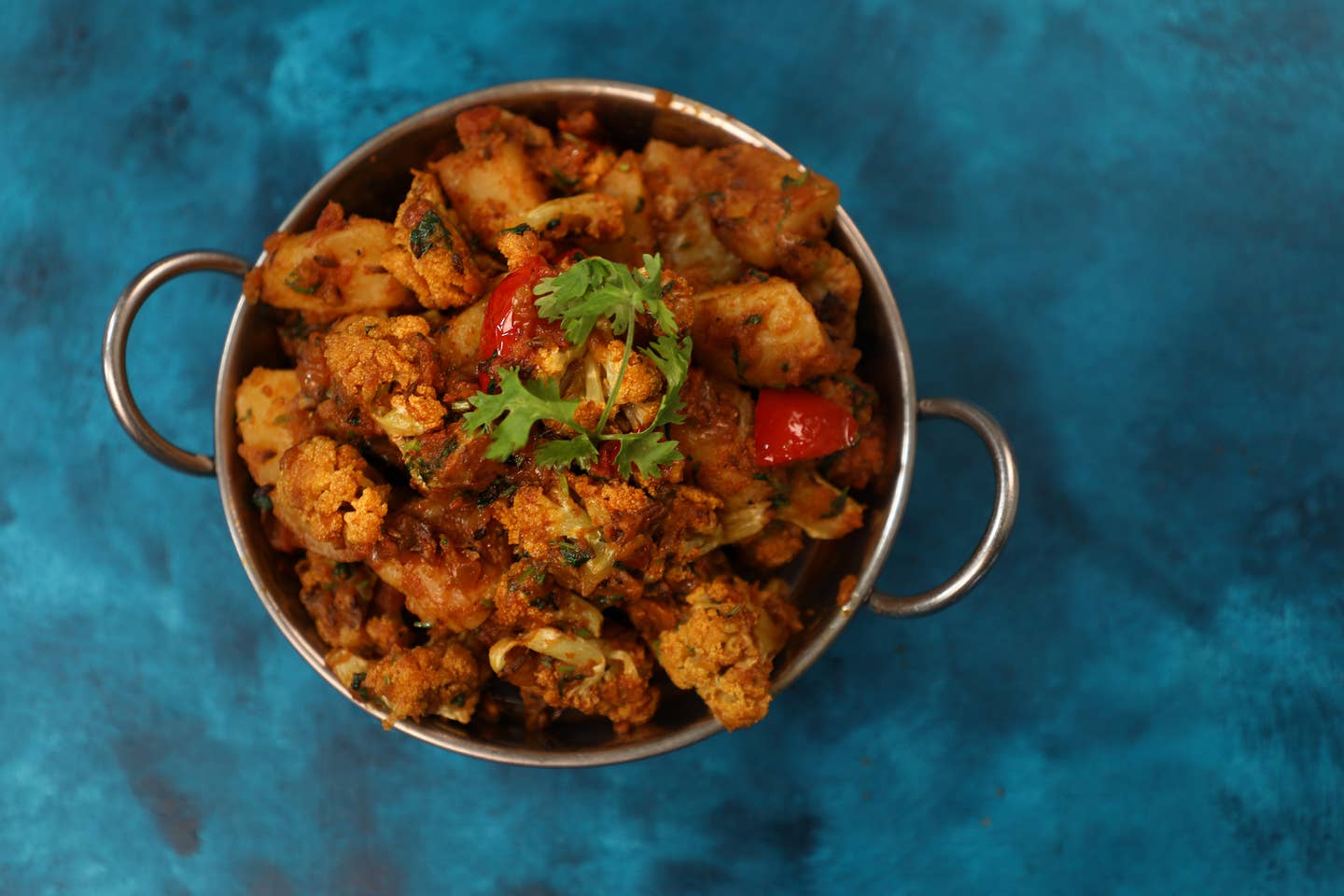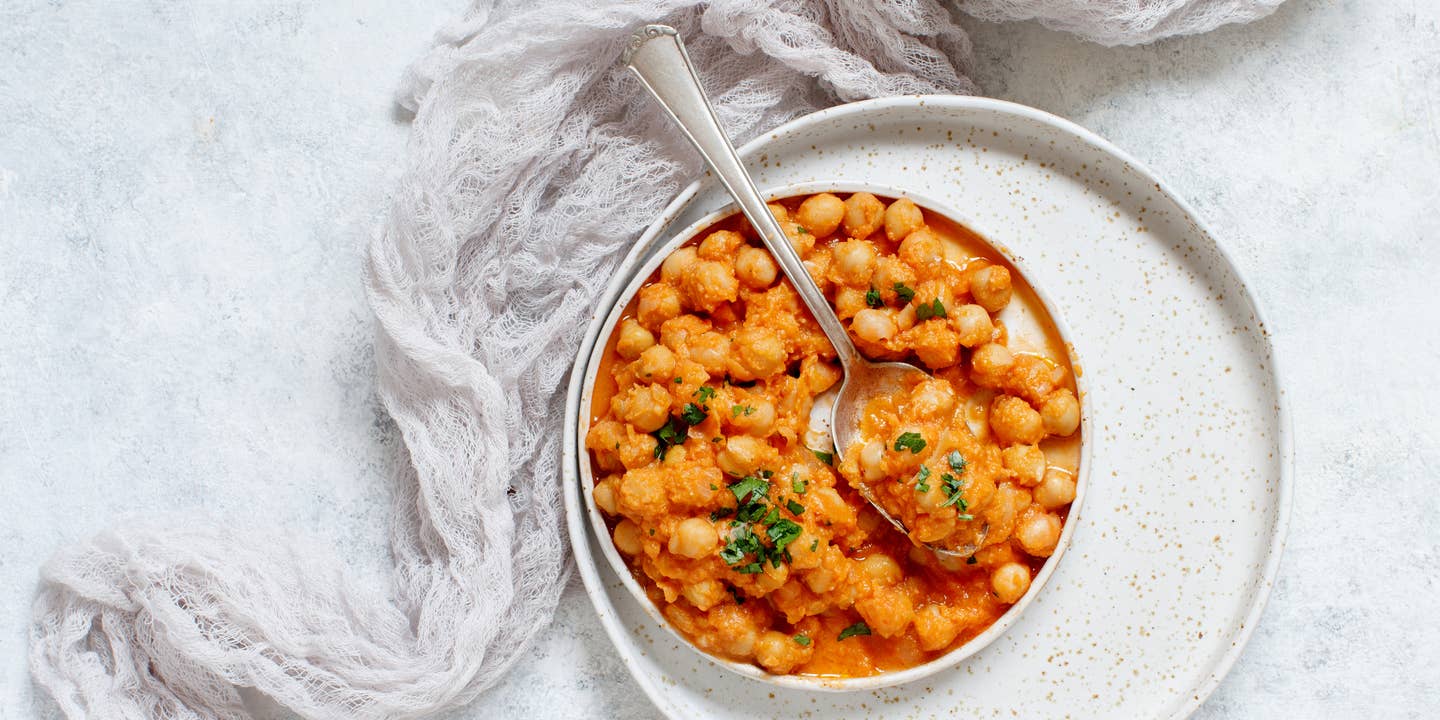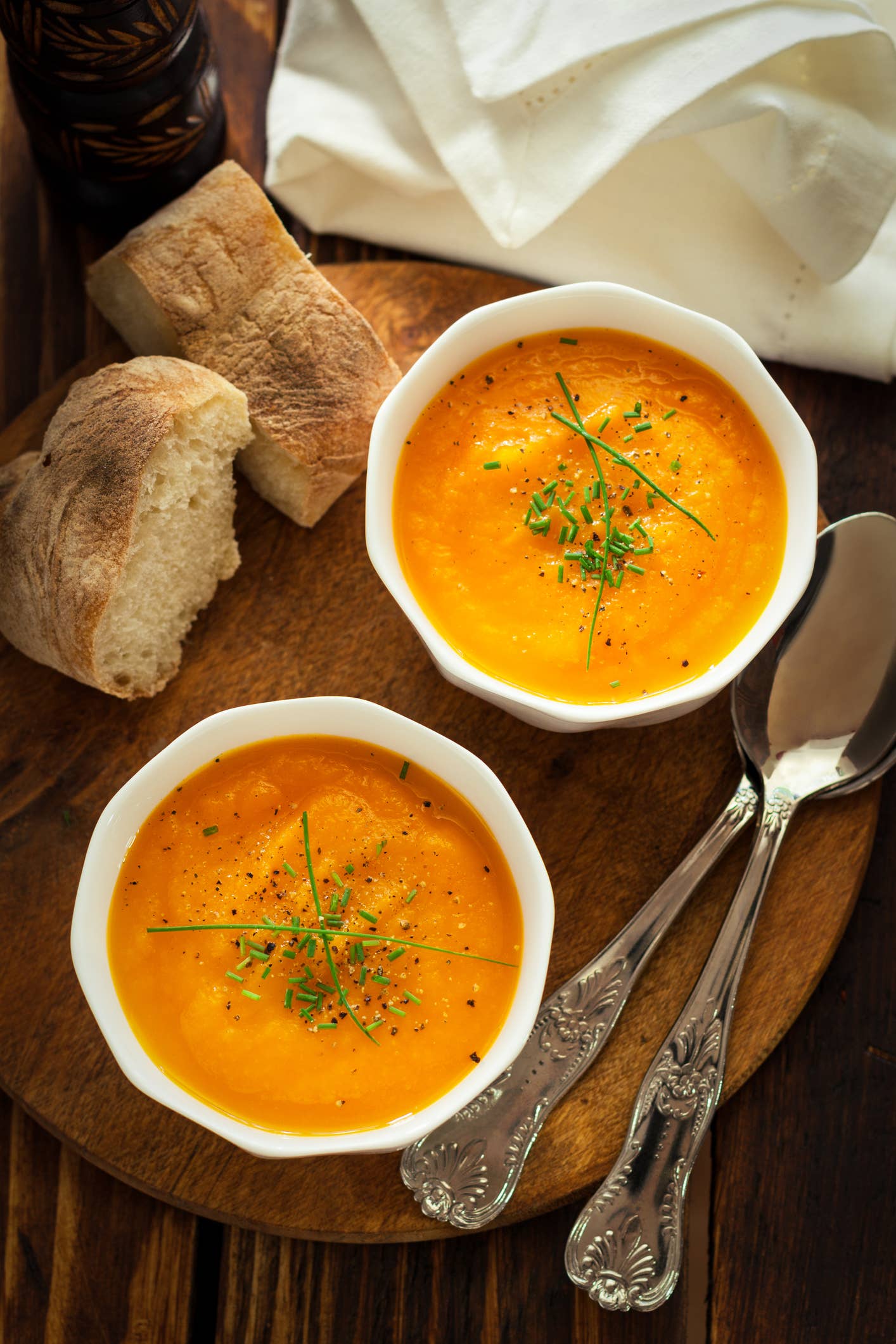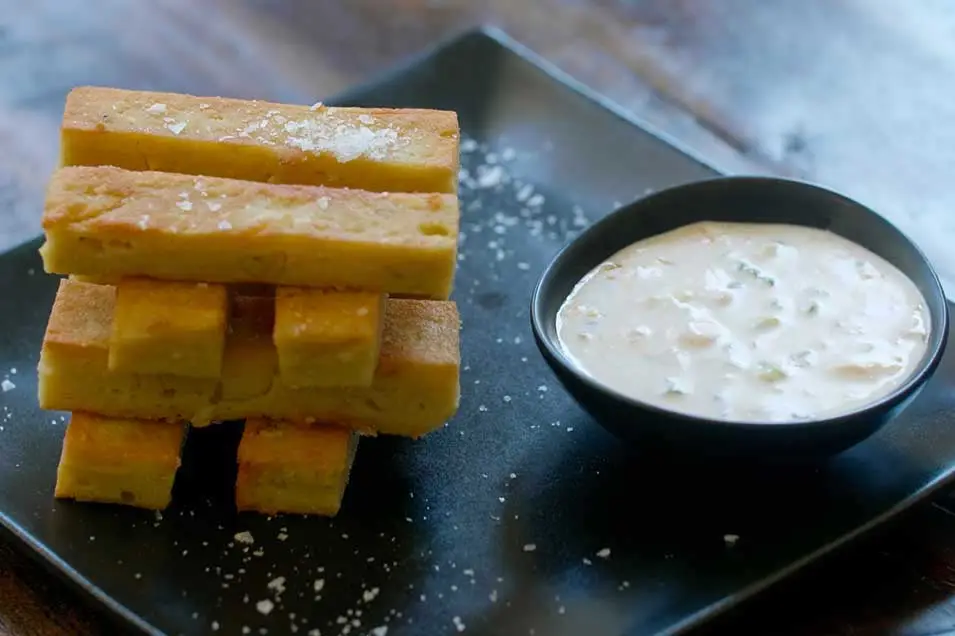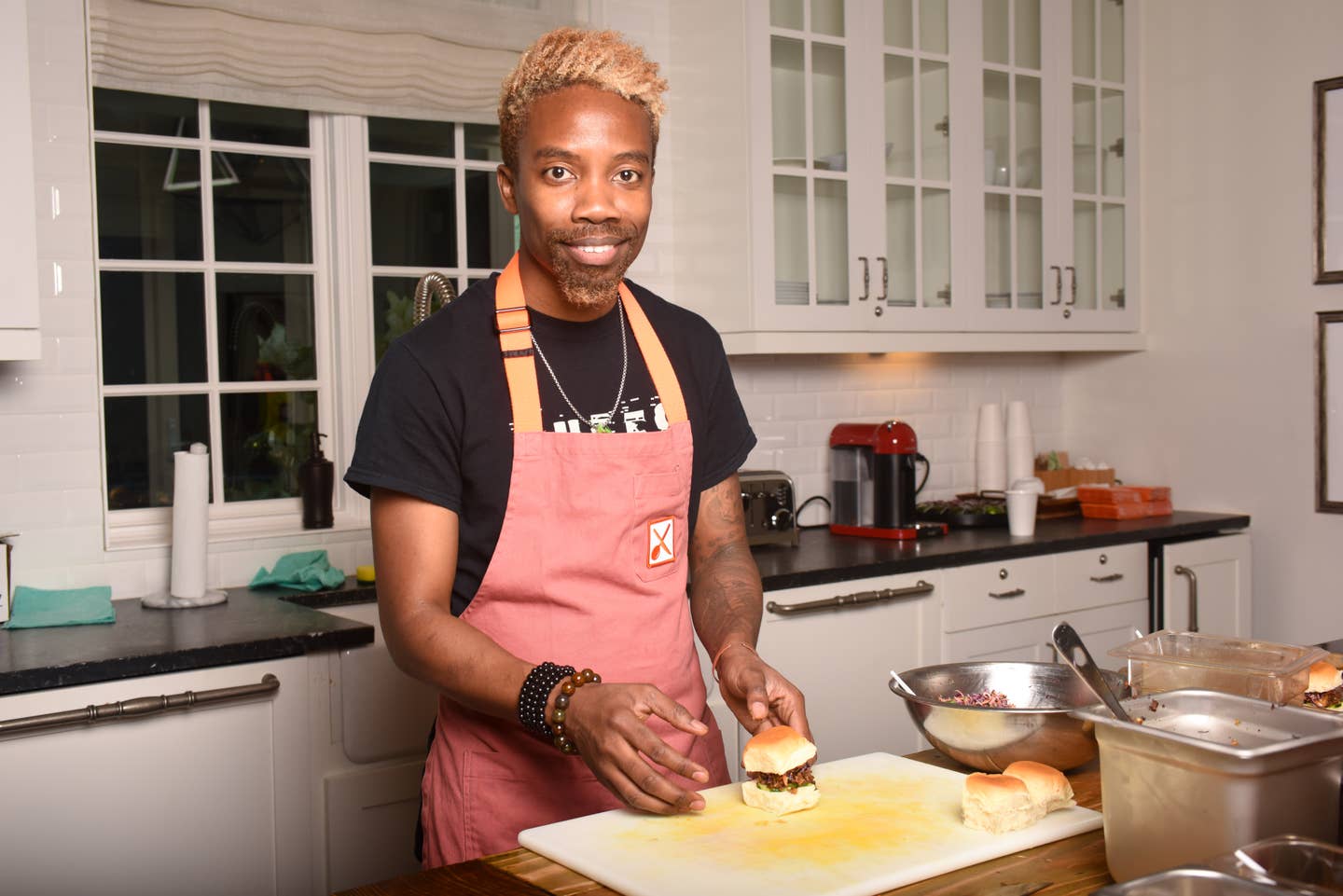
Chopped Winner Chef Ed Harris Wants to Help You Eat More ‘Veganish’
Chef Ed Harris of Food Network's Chopped and Iron Chef International fame is bringing a new approach to his creations, dosing his dishes with a hefty helping of plants in his new cookbook Veganish. Harris, who studied culinary at the Art Institute of New York City and built his resumé at iconic restaurants including Jean-Georges and Rivers' Café, found his passion for cooking through his time in the kitchen making food for his family as a young boy in St. Lucia.
In many ways, Harris' new cookbook venture actually represents a return to his roots, as Caribbean cuisine is deeply entrenched in plant-based traditions. I chatted with Harris to learn about his plant-based journey, and what pushed him to explore the world of veganism. Read on for tips, inspiration, and a delicious plant-based recipe from the chef himself.
The Beet: The name Veganish implies dipping a toe into the plant-based world. Are all the recipes in the cookbook vegan?
Chef Ed Harris: Yes, everything in the cookbook is vegan. I see 'Veganish' as a friendlier term because the concept of Veganism can be intimidating to some.
TB: What are some of your favorite recipes in Veganish?
EH: I love the mushroom stir fry, the parsley rice, charred cauliflower stir fry, and potstickers as some of my favorites, and also basics like the aromatics and the tomato sauce which is a hybrid of Italian and Nigerian flavors. My wife is Nigerian, and I was inspired by the way that they make tomato sauce and married that with the traditional technique. It creates a really robust tomato sauce that you can add to anything for flavor.
TB: Who's the target audience for these recipes? Obviously, you're an award-winning chef, but could someone with minimal cooking experience have success making these recipes?
EH: One thing I pride myself on doing a lot is trying to make recipes easy to follow. You don't need to be a pro– any home cook can do this. A beginner, a foodie, it really doesn't matter. Some recipes take a lot of skill but are broken down in a way that's easy enough for a new cook to follow. There's one particular recipe– the aromatics: The onion, garlic, ginger, and chilis is something I believe in so adamantly because you don't realize how much flavor you can develop just by having this combination as something you add to fried rice or stews or beans. Even for breakfast, making hash browns and adding a spoon of this will literally take your recipe from 1-10 in an instant. Not to mention, all of the immune-boosting benefits from garlic, ginger, onions, and chili peppers.
TB: Let's talk about your plant-based journey. Are you now fully vegan, or are you leaning into a plant-forward approach?
EH: I am working on cutting out some animal products still. Being that I am a chef, when I travel, especially internationally, there are dishes that I want to try just so that I can get a feel for the flavor,. I feel that if I can try it, I can understand it a little bit better, and then really make something plant-based that can replicate that item.
TB: Was there an inflection point that made you commit more fully to plant-based?
EH: There was definitely a point: My whole family, my wife, and our three kids, we sat down and watched What The Health on Netflix and that to me was really eye-opening. I knew most of what they were saying but to actually see it and hear it, that just made it even more clear for me.
TB: Was there one fact in What The Health that particularly pushed you to reconsider eating animal products?
EH: The way that factory chickens were being bred. From inception to a full adult, the whole process is so unnatural and unhealthy. What really got me was that the chickens were getting big so quickly that their legs couldn't even support their own bodies. For them to be sitting down all day and not getting any exercise, which is what makes chicken legs really delicious in the first place, because of the workout that they got, it threw me for a loop.
TB: You've been cooking for a long time–since you were 10 years old. Did you have these plant-based traditions as you were growing up or is this something that you've developed in recent years?
EH: Growing up in the Caribbean, we do eat tons of vegetables and fruits, that's just part of our diet. I just love eating meat as well. As I got older, I realized that it wasn't really great for me, so I leaned in towards cooking a lot more vegetables, cut down on eating meat only twice, three times a week. I really focused more on plants, fruits, vegetables for lunch, and dinner until it because every day.
TB: Is there one ingredient that you would recommend to people starting a plant-based diet?
EH: Yes–Mushrooms, all kinds. You can do so much, pickling, grilling. When you take time to understand different varieties you can use certain ones to mimic the mouthfeel of meat so you don't miss it. When I can't find good mushrooms, I love using beans, tofu, all kinds of plant-based proteins.
TB: You also have a line of spice blends, which can add a lot to a beginner's cooking repertoire. Tell me a little more about these.
EH: My new line of spice blends, called World Traveler, is my pride and joy. There are five of them, Bollywood, Chinatown, Taco Tuesday, Caribbean Heat. The names are kind of self-explanatory- Bollywood I use for curries, Chinatown for dumpling fillings. They're all-natural, non-GMO.
TB: In keeping with the idea of being a world traveler, is there one cuisine that Veganish focuses on?
EH: Veganish focuses on Southeast Asian cuisine Indian, Southeast Asian, Chinese, Thai flavors. Those are my favorite to cook, and those are cultures that are very easily made vegan.
Oven-Dried Pineapple Fried Rice
Recipe backstory: Chef Ed originally learned the technique while working at Buddakan in NYC. The oven-dried pineapple technique adds a dimension of flavor and natural sweetness. It is also beautiful to look at and eat.
Ingredients
Preparation Time: 30 mins
Cooking Time: 45 mins
Servings: 4
- 4 Oz Shiitake, small dice
- 4 Oz Pineapple, small dice
- 1⁄2 Teaspoon Thai Chili, minced
- 2 Tablespoon Red Onion, minced
- 2 Tablespoon Scallion, white part sliced 16 Oz Jasmine Rice, cooked
- 2 Teaspoon Salt
- 2 Tablespoon Scallion, green part sliced 1 Tablespoon Cilantro, chiffonade
- 1 Tablespoon Thai Basil, chiffonade Peanut Oil or Vegetable Oil
Instructions
For the Pineapple
- Preheat oven to 250 degrees.
- Peel the pineapple and cut lengthwise 1/4 inch thick.
- Line a sheet tray with parchment paper then spray with non-stick spray.
- Place the pineapple on the lined tray and into the oven at 250 degrees to dry the pieces out for about 30 to 50 minutes. Flip and rotate pineapple after 20 minutes. Being careful not to burn them. When the pineapple is ready, remove it from the oven and cool down completely. Then cut into small pieces for rice and reserve.
For the Fried Rice
- Heat a wok or saute pan on high and add peanut oil about 2-3 tablespoons. As soon as oil starts to smoke...
- Add the shiitake, chili, onions, and scallion. Sweat slightly then add the rice. Making sure to loosen any clumps.
- Cook the rice until it has been incorporated with all other ingredients, scraping the rice off the sides as you cook it.
- Season the rice with salt and finish with scallion greens, pineapple, Thai basil and cilantro then remove from heat.
More From The Beet
